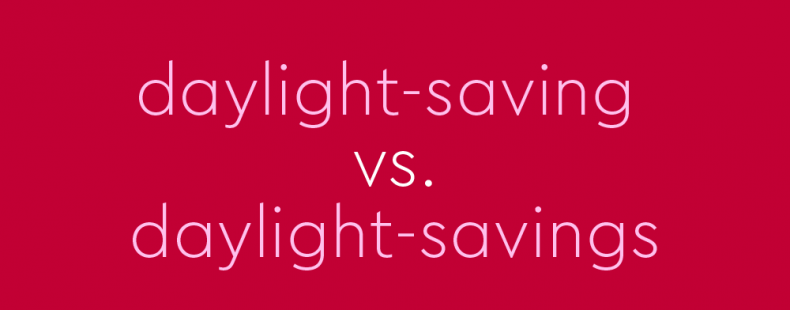Twice a year—once in March and once in November—we’re forced to change our clocks forward and then backward an hour. You’ve likely heard a passionate voice or two in the debate over whether this is necessary.
Yet there’s another debate that comes up from the switch as well: whether it’s daylight-saving time or daylight-savings time. And as you can probably imagine, this one can get contentious as well.

What is daylight-saving time, and when is it?
Daylight-saving time is the time that’s set ahead of your local standard time (usually by one hour). It starts at 2 am on the second Sunday in March in the US, and shifts an extra hour of daylight to the evening until it ends at 2 am on the first Sunday in November.
As far as concepts that alter our sense of time go, daylight-saving time may be the easiest to understand. It was first proposed in New Zealand in 1895 and then in Britain in 1907, but the first country to adopt the practice was Germany in 1916 during World War I to conserve energy for the war effort. Other countries in the war followed suit, including the United States in 1918.
The practice stuck with the US after the war, though that doesn’t mean everyone is a fan. Daylight-saving time is more useful the farther you are from the equator where the seasonal shift in sunlight is greater. That’s why Arizona and Hawaii nixed daylight-saving time altogether.
People in all of the other states have to remember to change their clocks (well, at least the clocks that don’t change themselves). Thankfully there’s a simple mnemonic to remember whether you’re losing or gaining an hour of sweet, sweet sleep: spring forward, fall back.
Daylight-saving time vs. daylight-savings time
Even if you understand the concept of daylight-saving time, you might still be wondering what’s up with that extra -s that’s sometimes added to saving.
Daylight-saving time (singular saving) is technically the correct version: the practice is saving daylight. Still, daylight-savings time (with the plural savings) is so commonly used that it’s become an accepted variant of daylight-saving time. As some have pointed out, perhaps this is because of the phrases that use the plural savings when talking about money, such as a savings account at a bank or a savings rate taken out of your paycheck for a rainy day. Or perhaps, the regular use of the acronym for daylight-saving time, DST, has caused some of us to forget what it stood for in the first place.
Daylight-savings time is fine when you’re chatting with friends in an informal setting. When it comes to formally talking about time, however, it’s best to use the singular saving. (You never know if the person reading your report or paper is grumpy because they lost that extra hour of sleep when the clock turned.)
Then there’s the question of the hyphen. Some leave it off while others include it. We hyphenate because daylight-saving together modifies the word time that directly follows.
Finally, just when you thought the questions surrounding this one phrase were over, you have to consider capitalization. Daylight-saving time is not capitalized, though DST typically is (unless you’re in the US government, where the printing office style manual abbreviates as d.s.t.).
Yes, this can be a lot to remember after sacrificing an hour of sleep in the spring to the clock. But at least you’ll get that hour back in November.














